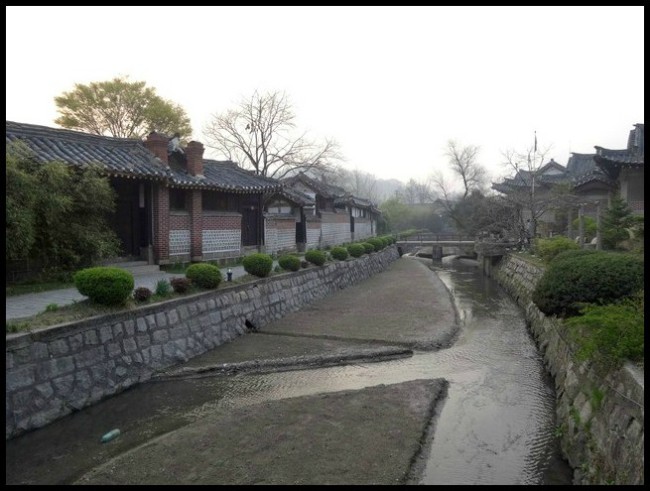
While you are visiting the Koryo Museum there are two shops, one within the museum complex and one just outside of it worthy a look. Continue reading “Koryo Museum – Ginseng and Stamps”

While you are visiting the Koryo Museum there are two shops, one within the museum complex and one just outside of it worthy a look. Continue reading “Koryo Museum – Ginseng and Stamps”

This large complex of buildings (currently nearly 20) originally dates from 992 when the site housed the Taemyon Palace which later became an imperial guest-house and then the Bureau for Confucian Doctrines. In 1089 it became ‘the Kakjagam’ or highest centre of learning in Kaesong for those seeking to enter the civil service. Children of the aristocracy attended this centre of Confucian learning throughout the Koryo period and the subsequent Ri period which ended in the late 19th century. Continue reading “Koryo Museum”

Although North Korea is an ancient country with roots going back 4000 years tourists have very little opportunity to see or hear about anything pre-dating the Japanese occupation of the country in the late 19th century. Visits to North Korea focus on the iconography of the modern age, monuments and museums perpetuating the cult of personality of the Kim Dynasty which only dates from 1945, with the ending of the Japanese occupation of the peninsula.
There were a small number of exceptions to this ‘Kim Dynasty focus’ on our trip and one was a visit to the Tomb of King Kongmin (more formally the Hyonjongrung Royal Tomb) about 13kms outside Kaesong. Continue reading “Tomb of King Kongmin”

Having been a royal capital for over 500 years, Kaesong has a highly developed cuisine with a presentation style fit for royalty.
Our meal at the Kaesonng Folk Custom Hotel was a traditional Royal Pansanggi banquet consisting of numerous dishes each presented in a small metal bowl. While my first picture shows 11 dishes per person, additional dishes provided during the meal brought the number to over 13, the number traditionally served to royalty. Continue reading “Kaesong Folk Custom Hotel: ‘Royal Pansanggi Banquet’”

There are very few places where visitors are permitted to stay in Kaesong and you, like me, will most likely stay at the traditional Korean style Folk Custom Hotel, opened in 1989 and situated on the periphery of Kaesong old town. This is a good thing as long as you are aware that it is a traditional Korean hotel so you will sleep on a padded floor mat and eat sitting on the floor. Continue reading “Kaesong Folk Custom Hotel: ‘Traditional Korean Hotel’”

Not all children make it to the Students and Children’s Palace for its wide range of fun extra curriculum activities. Many, the non-elite, are forced engage in less fun extra curriculum activities (assuming they go to school at all). For city children this frequently appears to mean sweeping the streets and other public areas. While these children, tidying up around Kim Il-sung’s statue on Mount Janam seemed perfectly happy to engage with us and have their photos taken it wasn’t long until we were told by our guide to desist from taking photos of the kids (clearly from less well to do families) as we were frightening and upsetting them! Continue reading “Other Extra Curriculum Activity”

The most noticeable building in Kaesong and one we had a great view off from the Kwandok Pavilion on Mount Janam is the Kaesong Students and Children’s Palace, a smaller version of the Mangyongdae Children’s Palace in Pyongyang though here in a more traditional Korean architectural style. It opened in 1961. Continue reading “Kaesong Students and Children’s Palace”

Kaesong has a very long history and has the best preserved old town area in North Korea. While most of North Korea was razed to the ground by US bombing during the Korean War, Kaesong was spared by virtue of the fact that, until it was captured by the North Koreans, it had been on the South Korean side of the border – the 38th parallel north- as determined by Russia and the United States at the end of WWII. It is the only town that changed hands in the three year long war which cost the lives of nearly three million people. Continue reading “Kaesong Old Town”

Perched on the side of Mount Janam, about 100 metres walk from the large bronze statue of Kim Il-sung, is the Kwandok Pavilion. The original pavilion was constructed in 1780 for archery contests. It was destroyed in 1950 by US bombing in the early days of the Korean War. The existing structure is a 1954 reconstruction. Continue reading “Kwandok Pavilion”

Turning your back on the Great Leader is hard to do, but do it you must in this case.
The view down Tongil (Reunification) Street is the most photographed in Kaesong and one of the best recognised vistas in North Korea. Continue reading “Tongil Street”